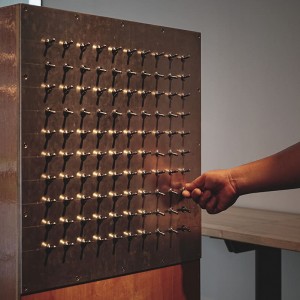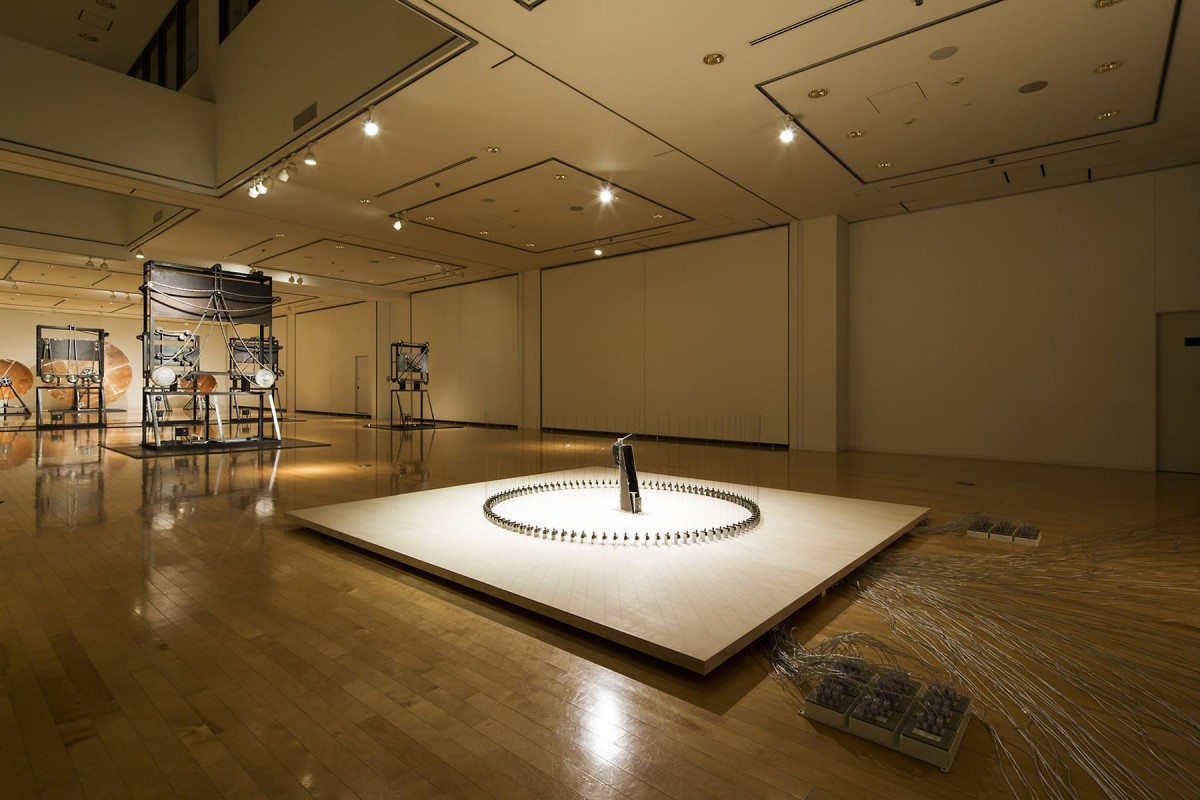
Domain of Art 11 / 大マシ-ン
プラザノース ノースギャラリー(埼玉)
2013.8.3 – 8.25
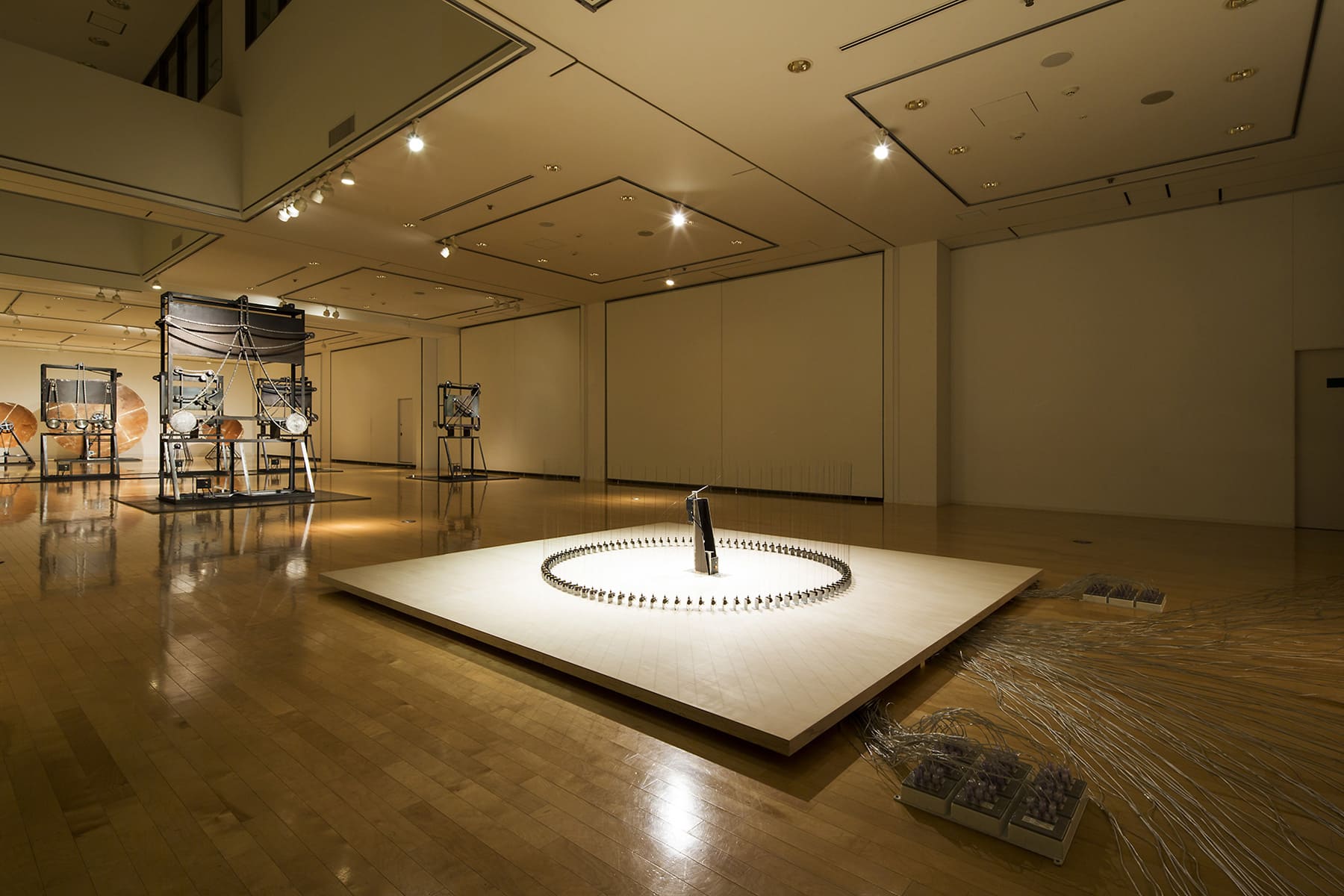
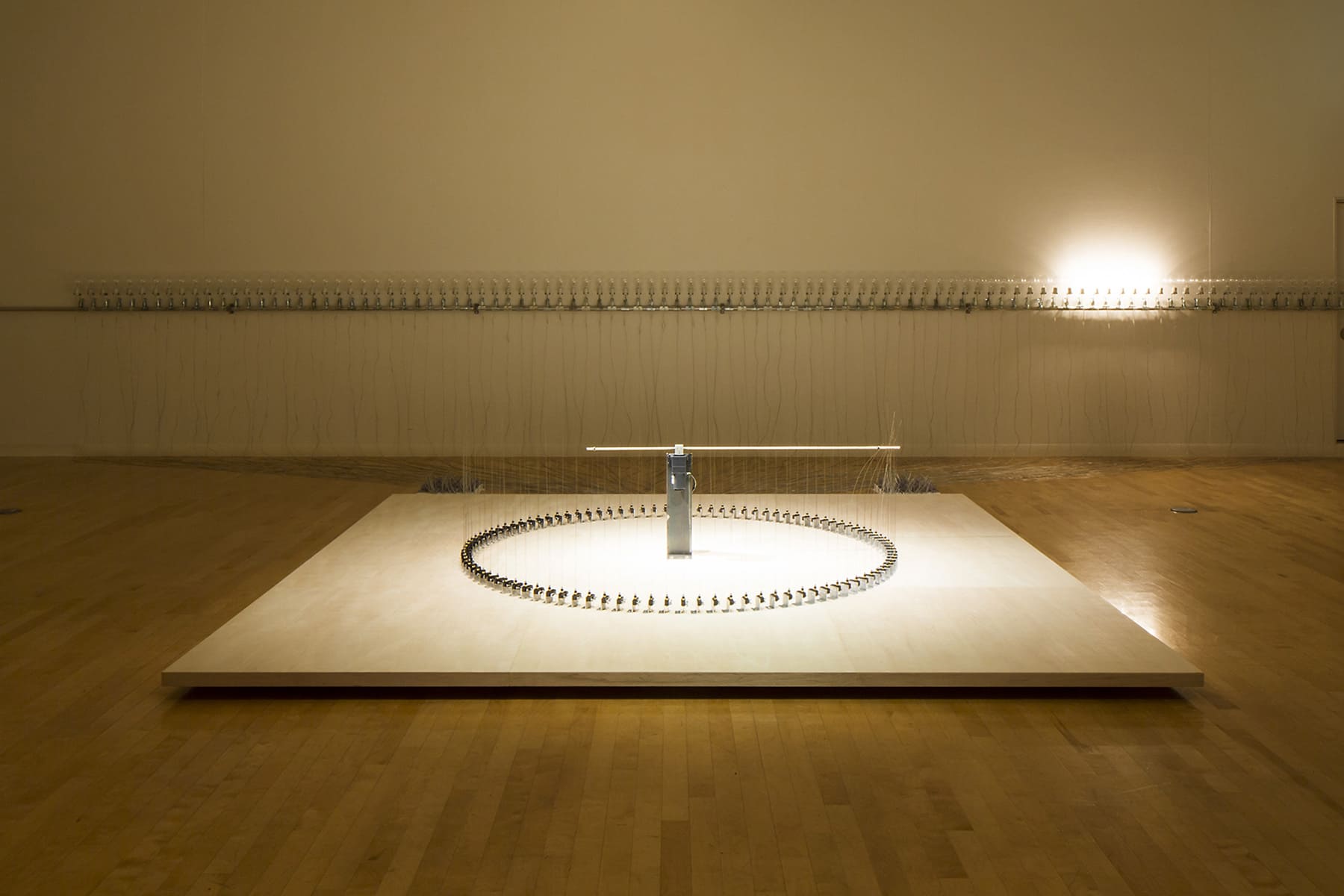
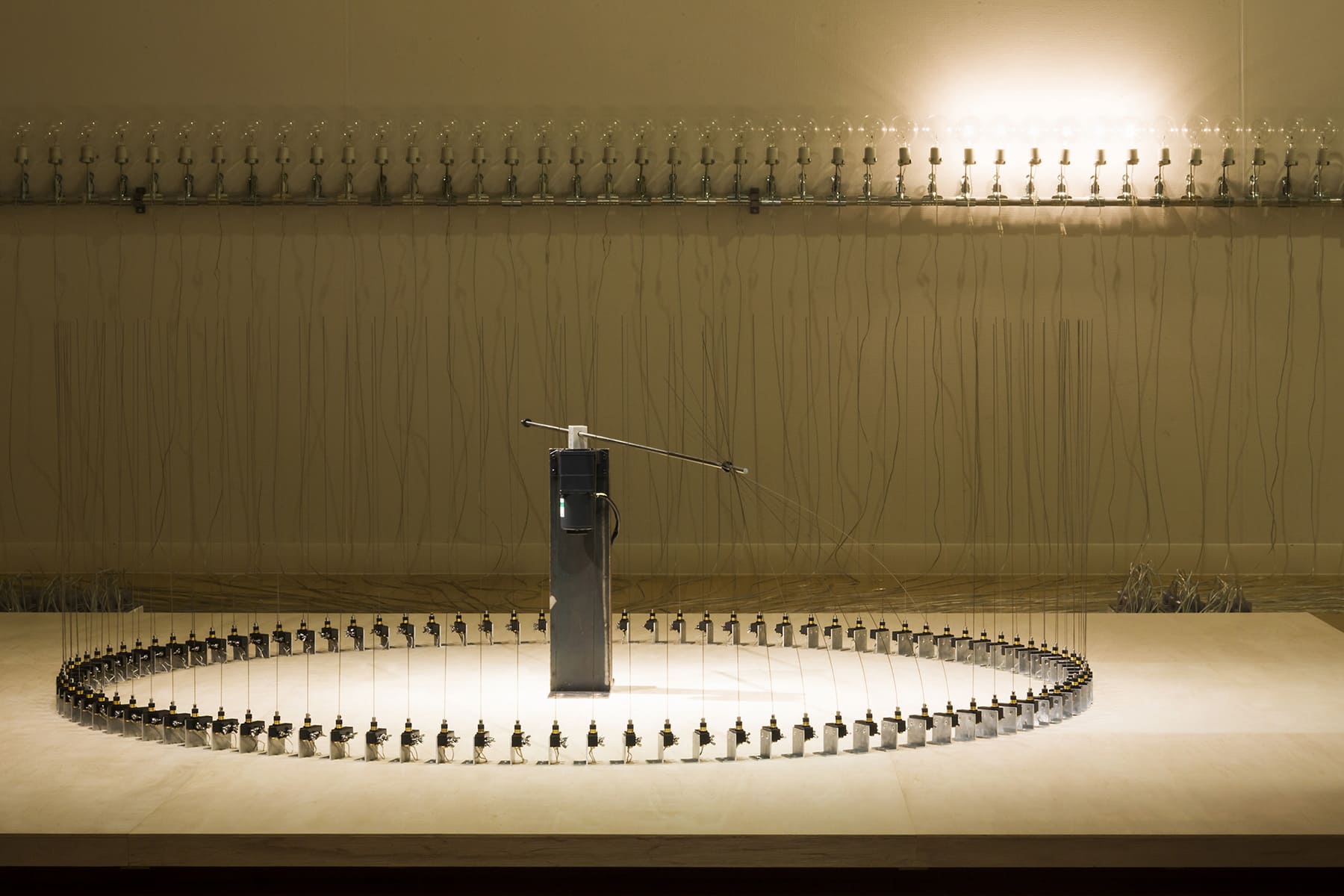
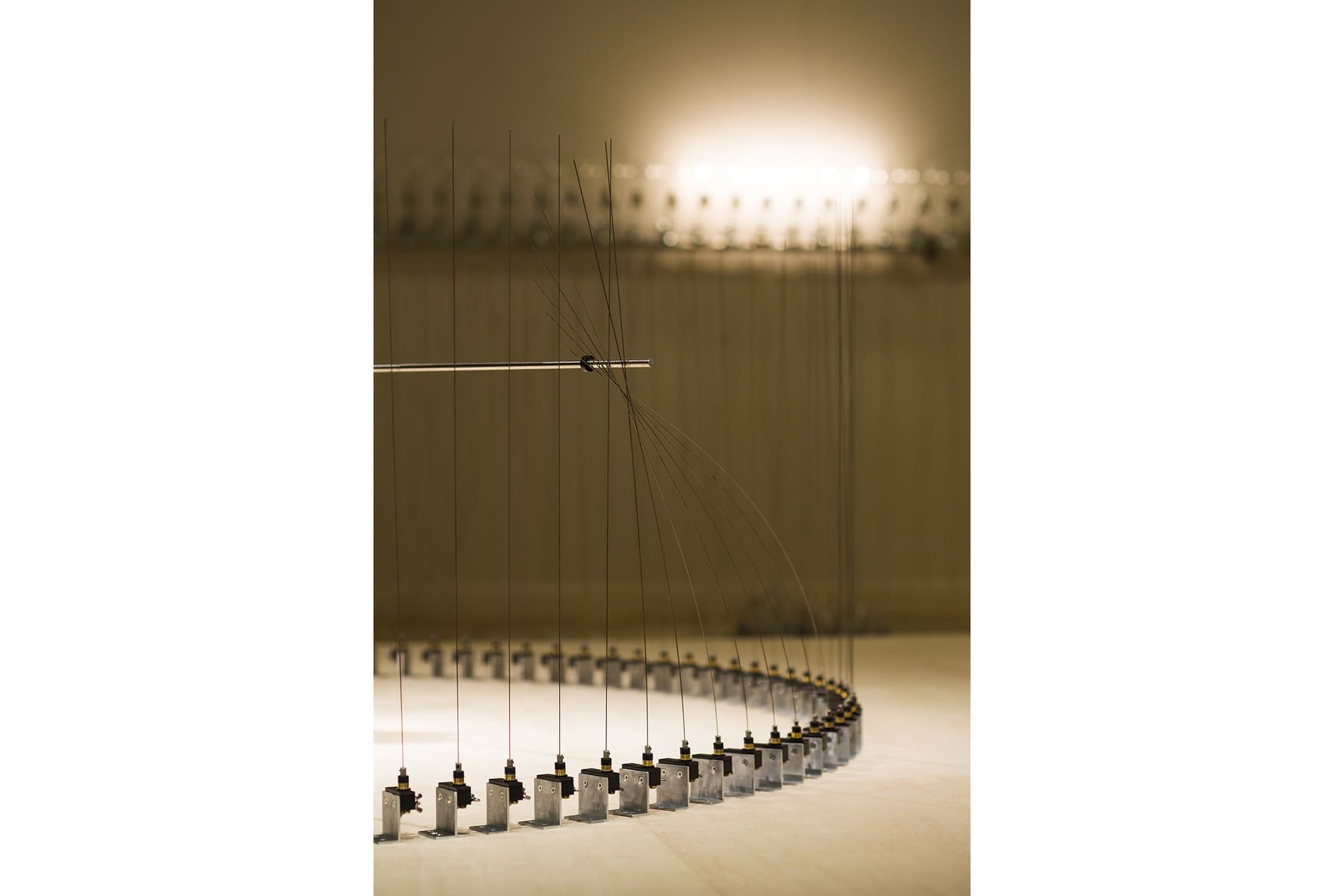
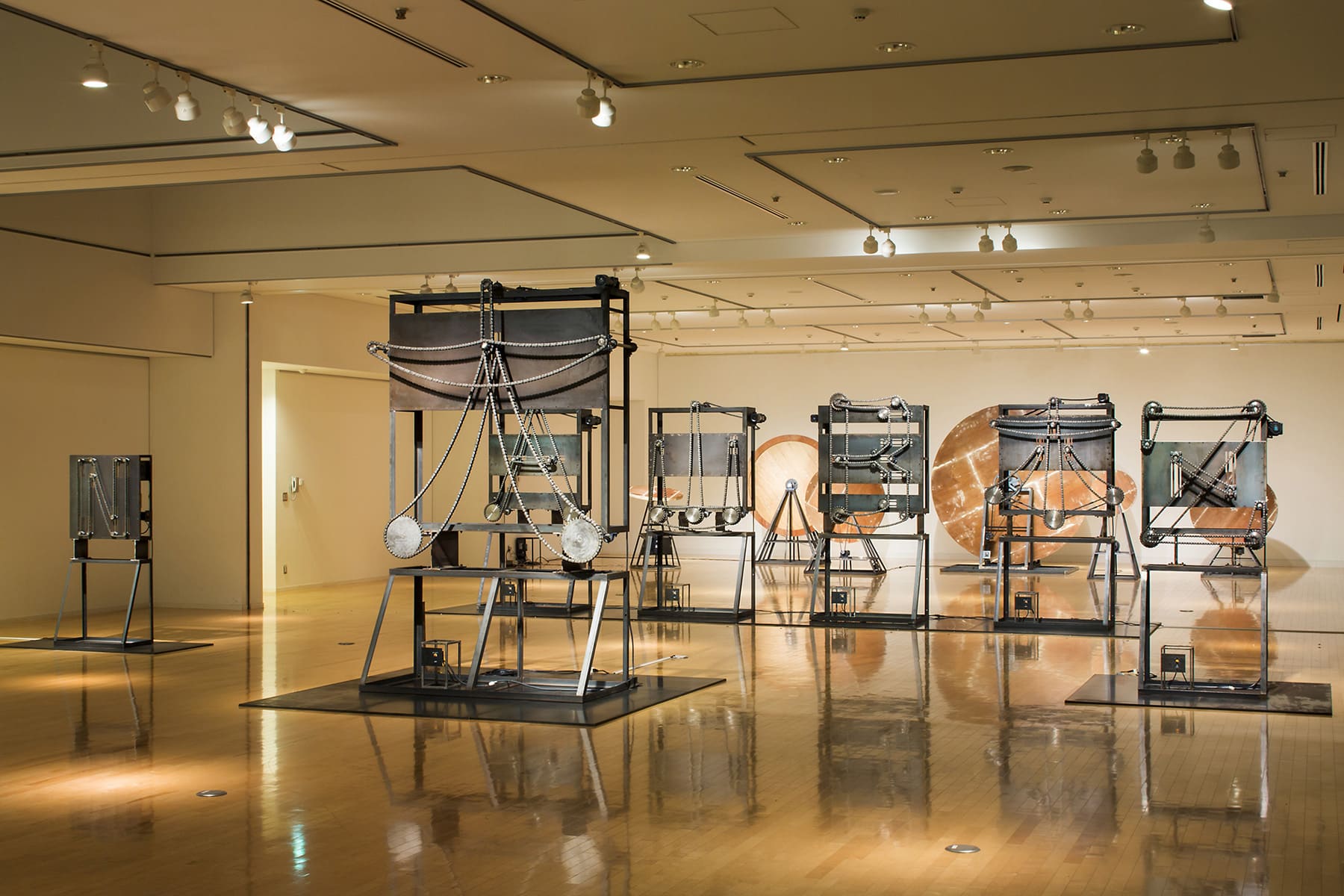
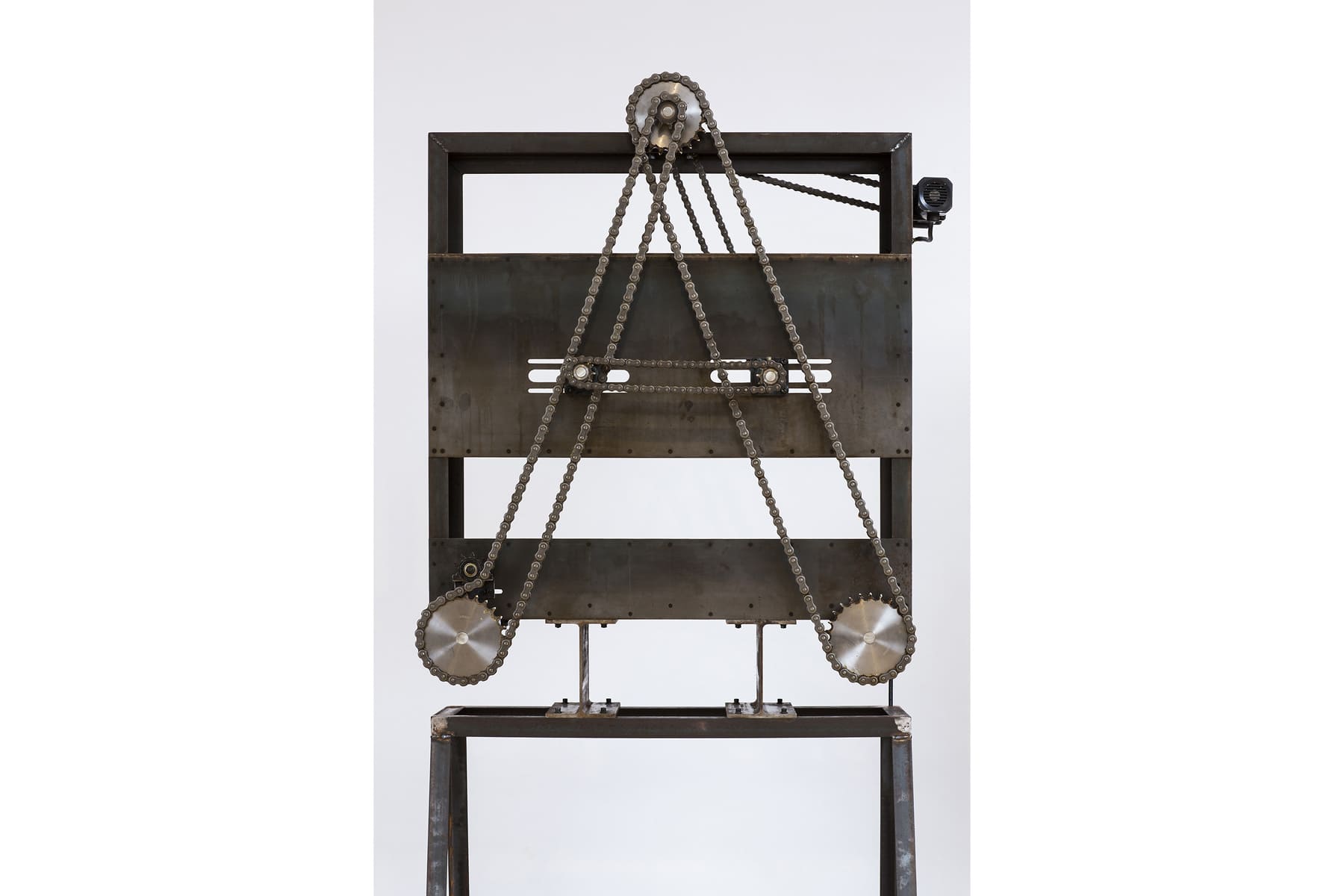
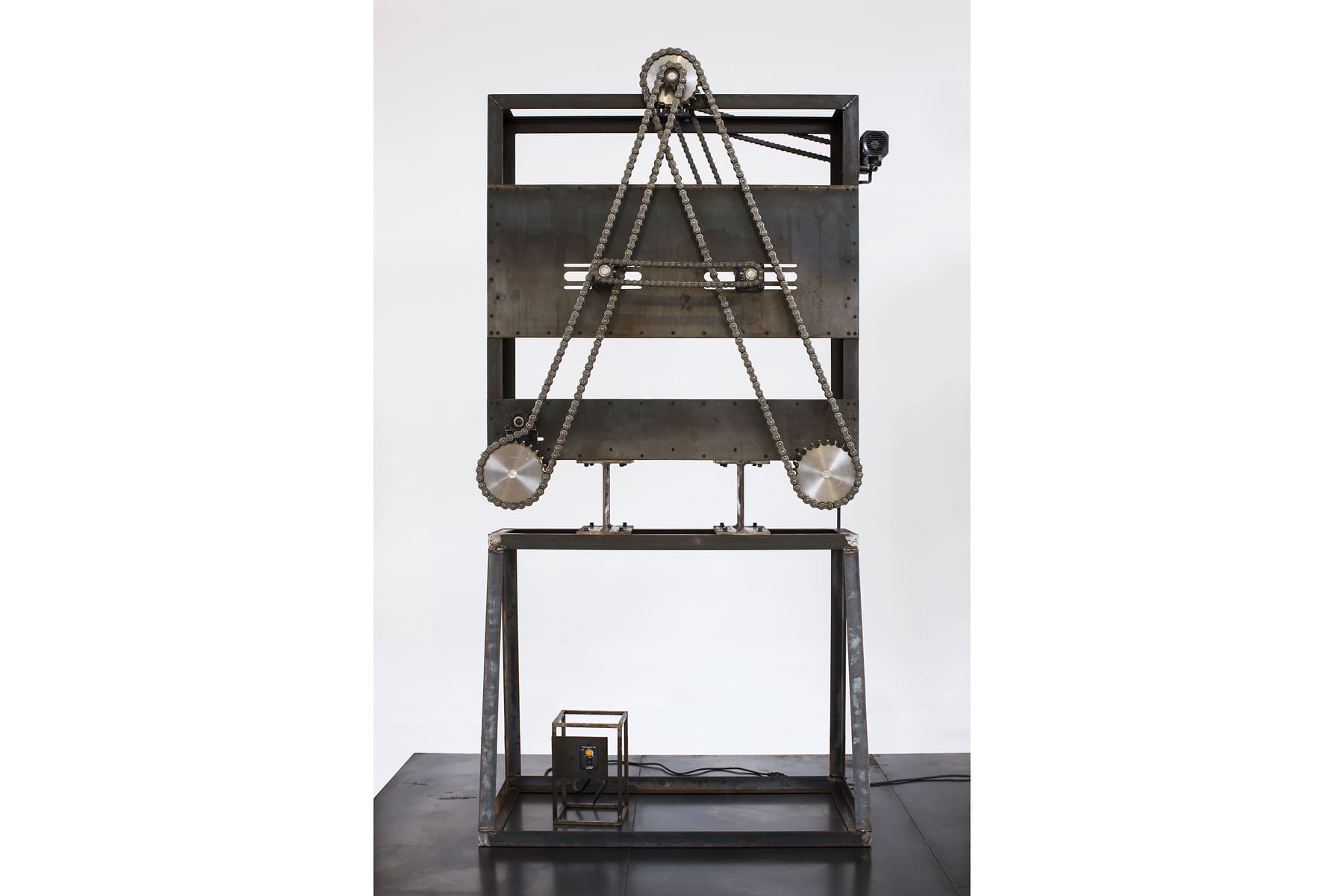
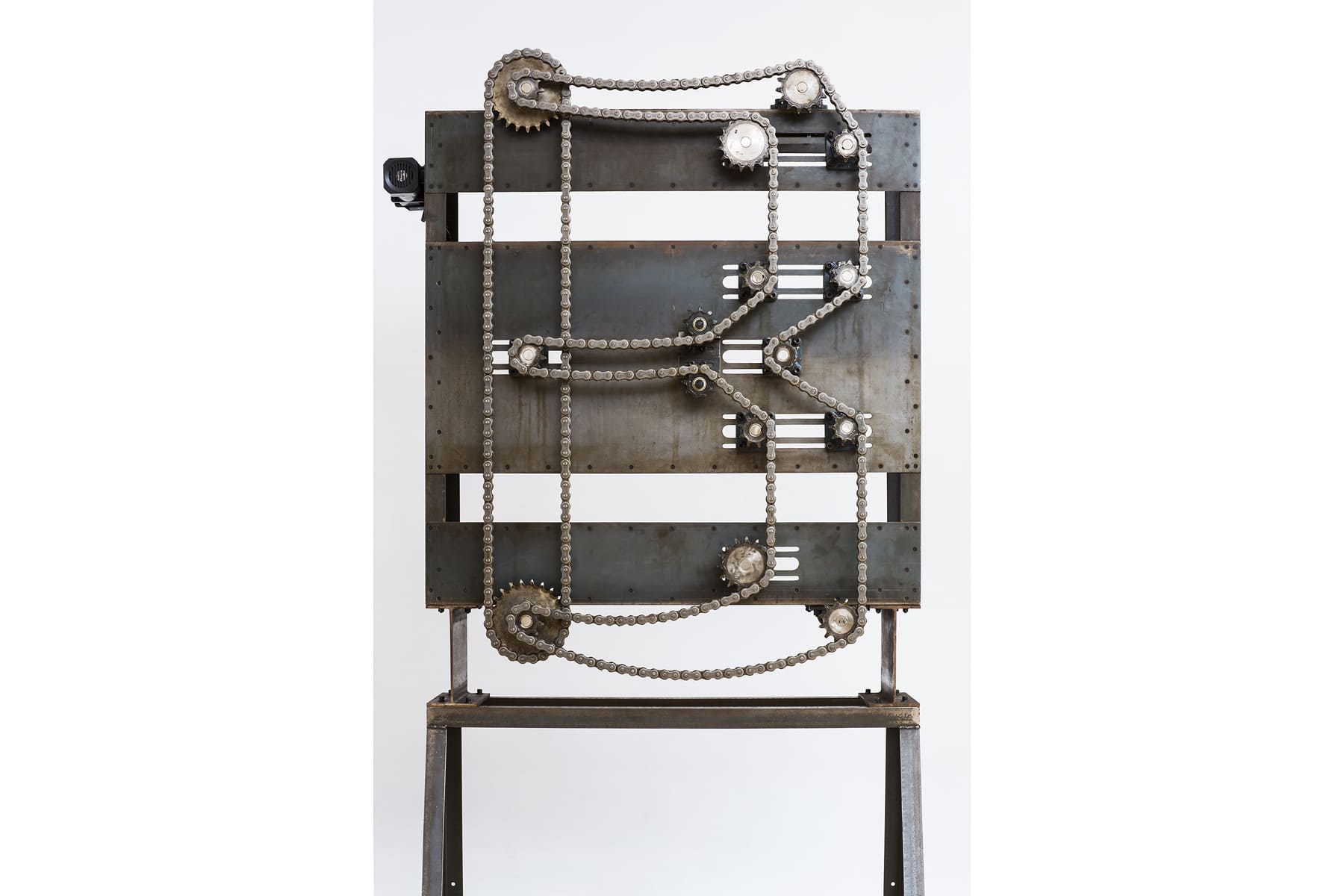
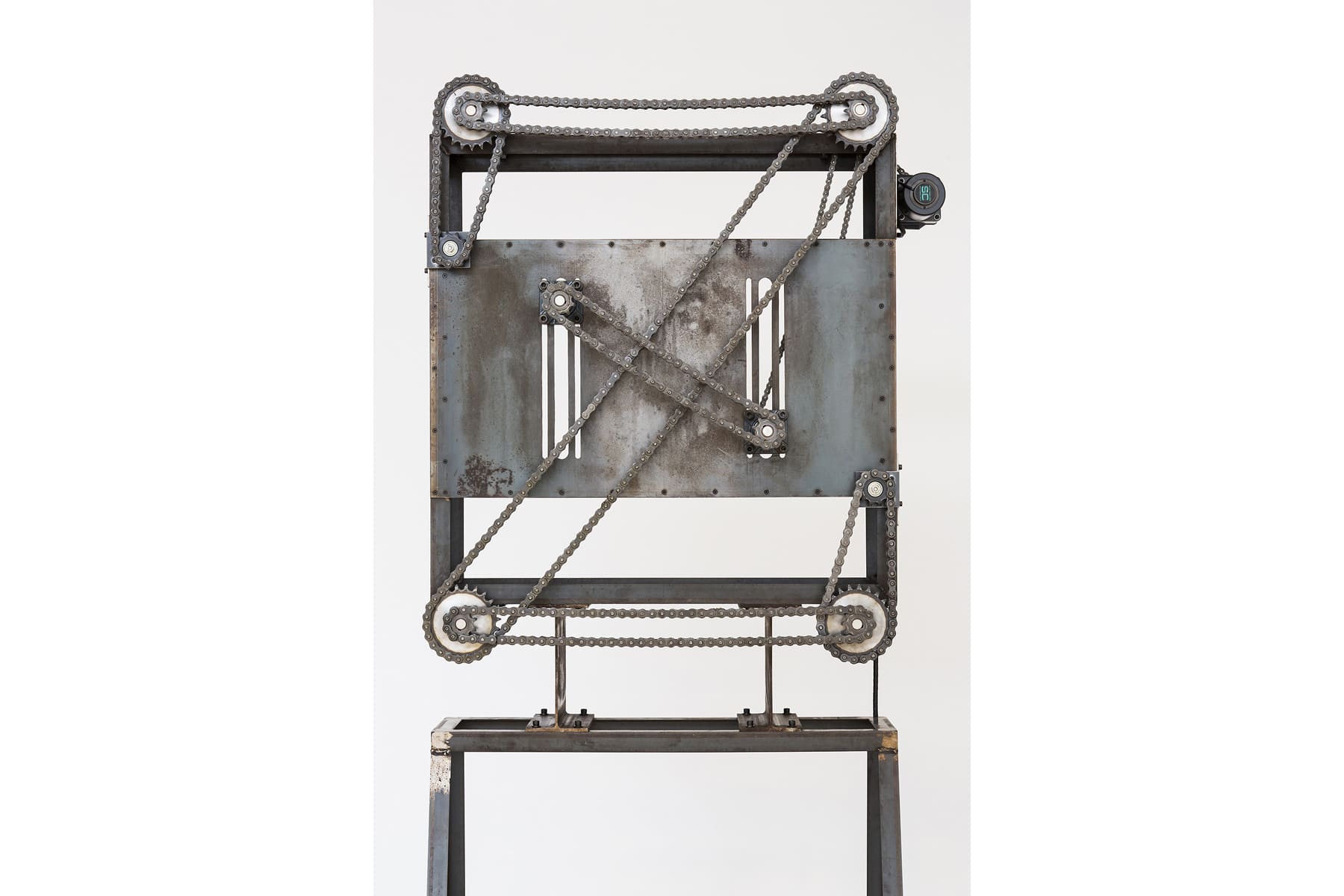
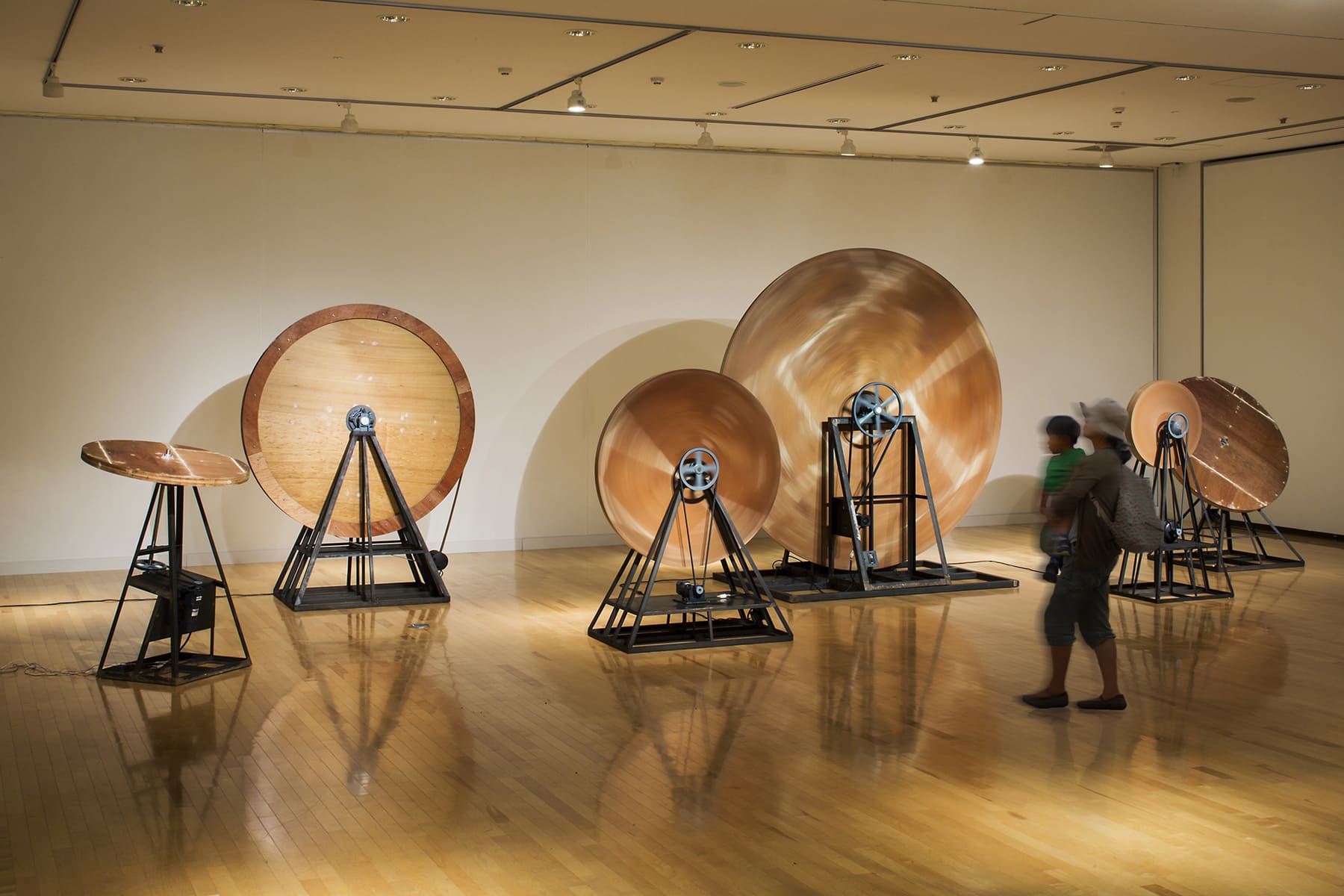
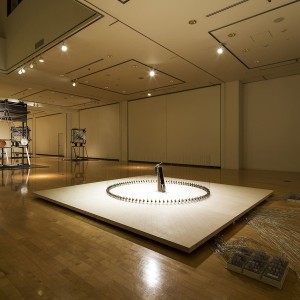
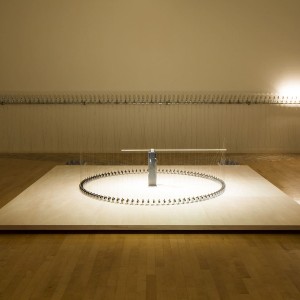
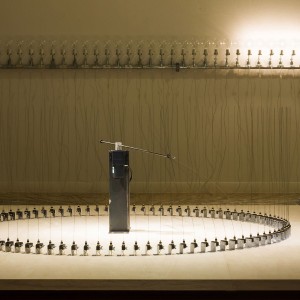
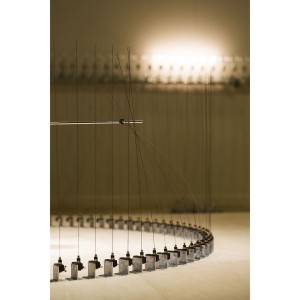
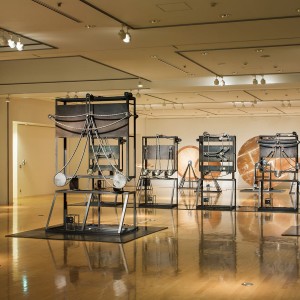
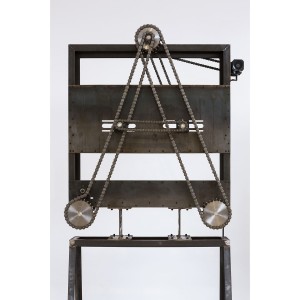
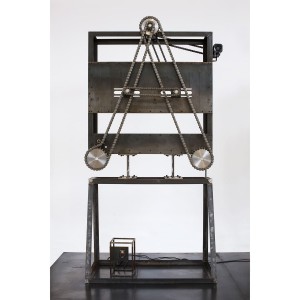
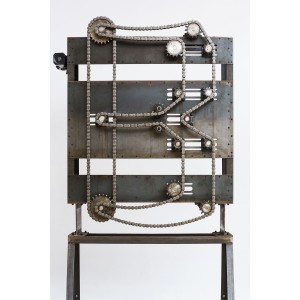
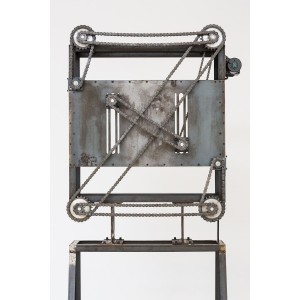
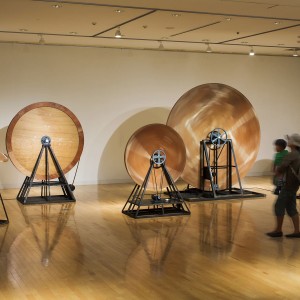
撮影:木暮伸也
A machine
2011
H260 x W1350 x D700 cm
Z machine
2011
H225 x W108 x D630 cm
回転する木の円盤 #1
2000 / 1800 x 1000 x 2400 mm / 木、鉄、モータ、etc
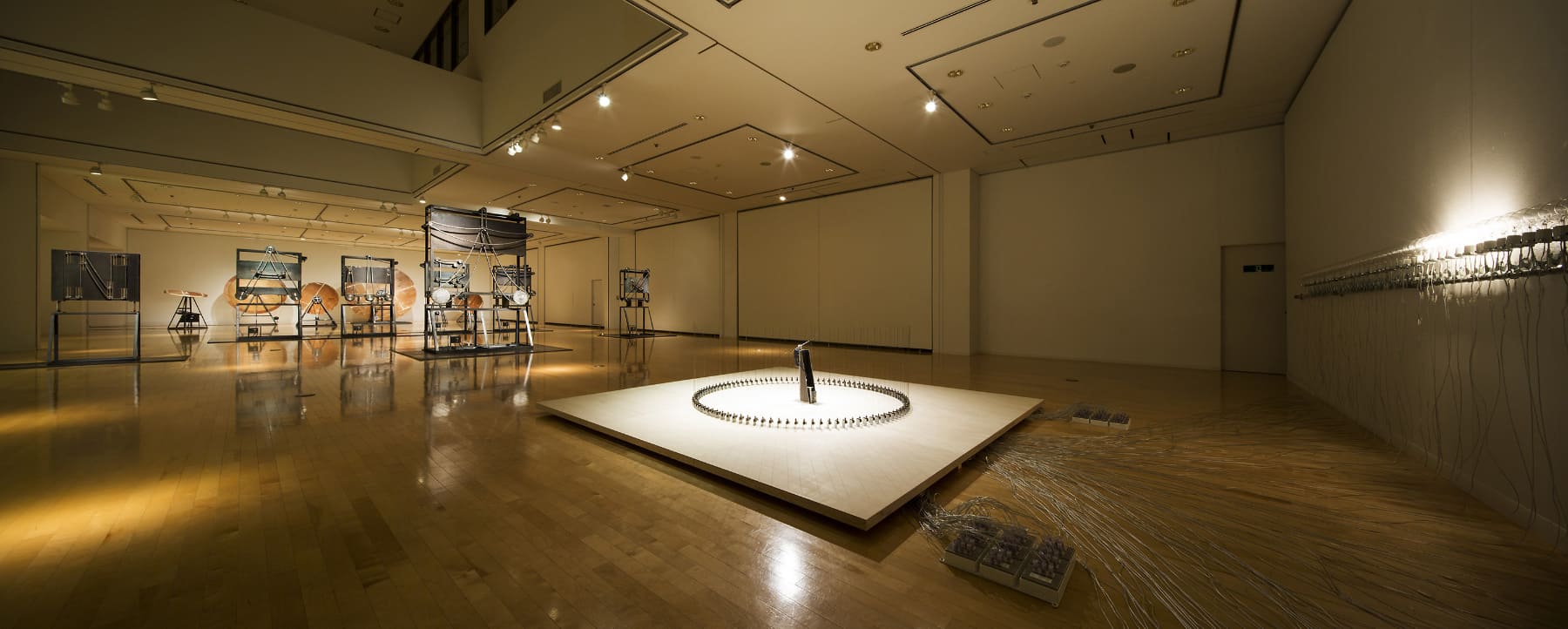


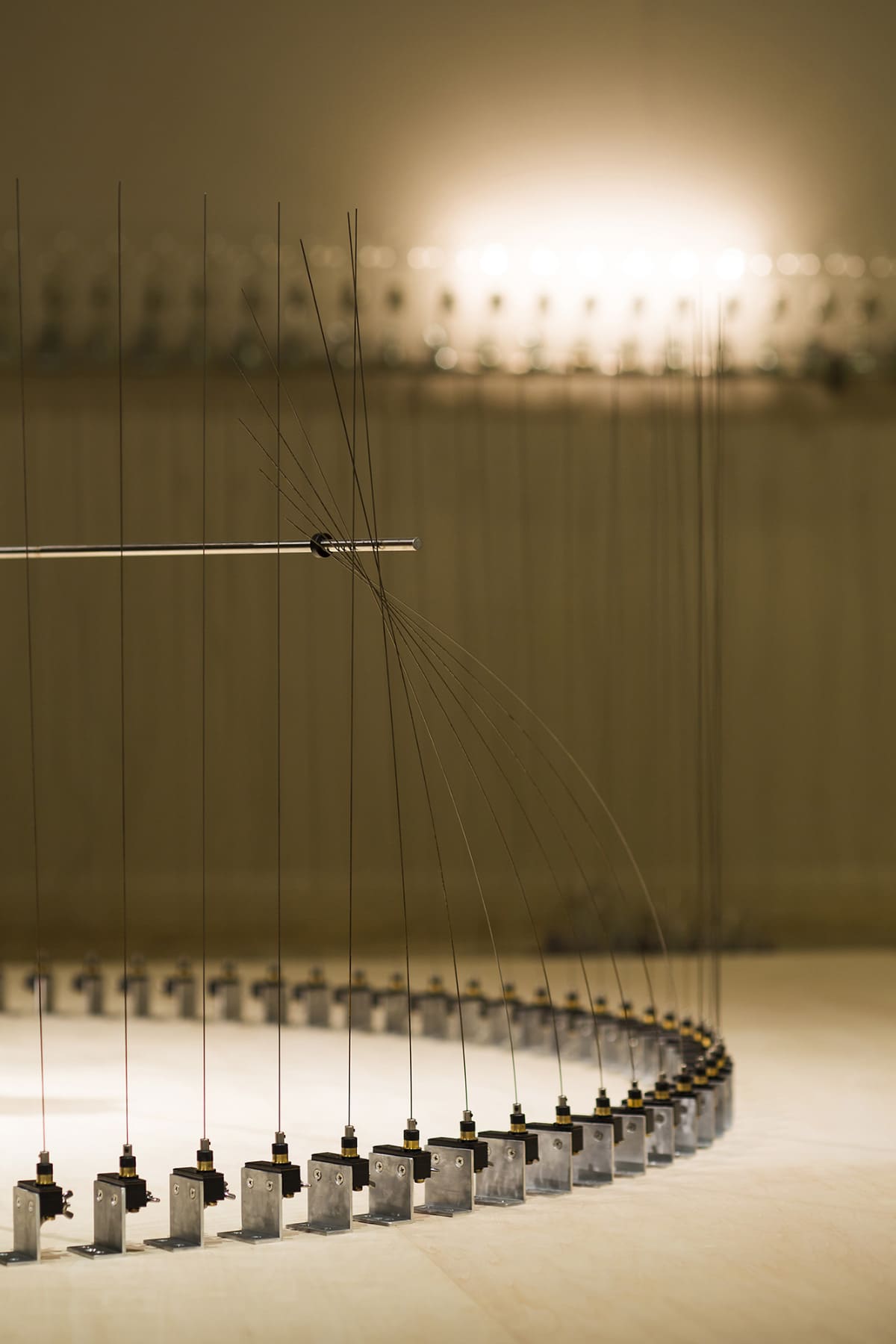

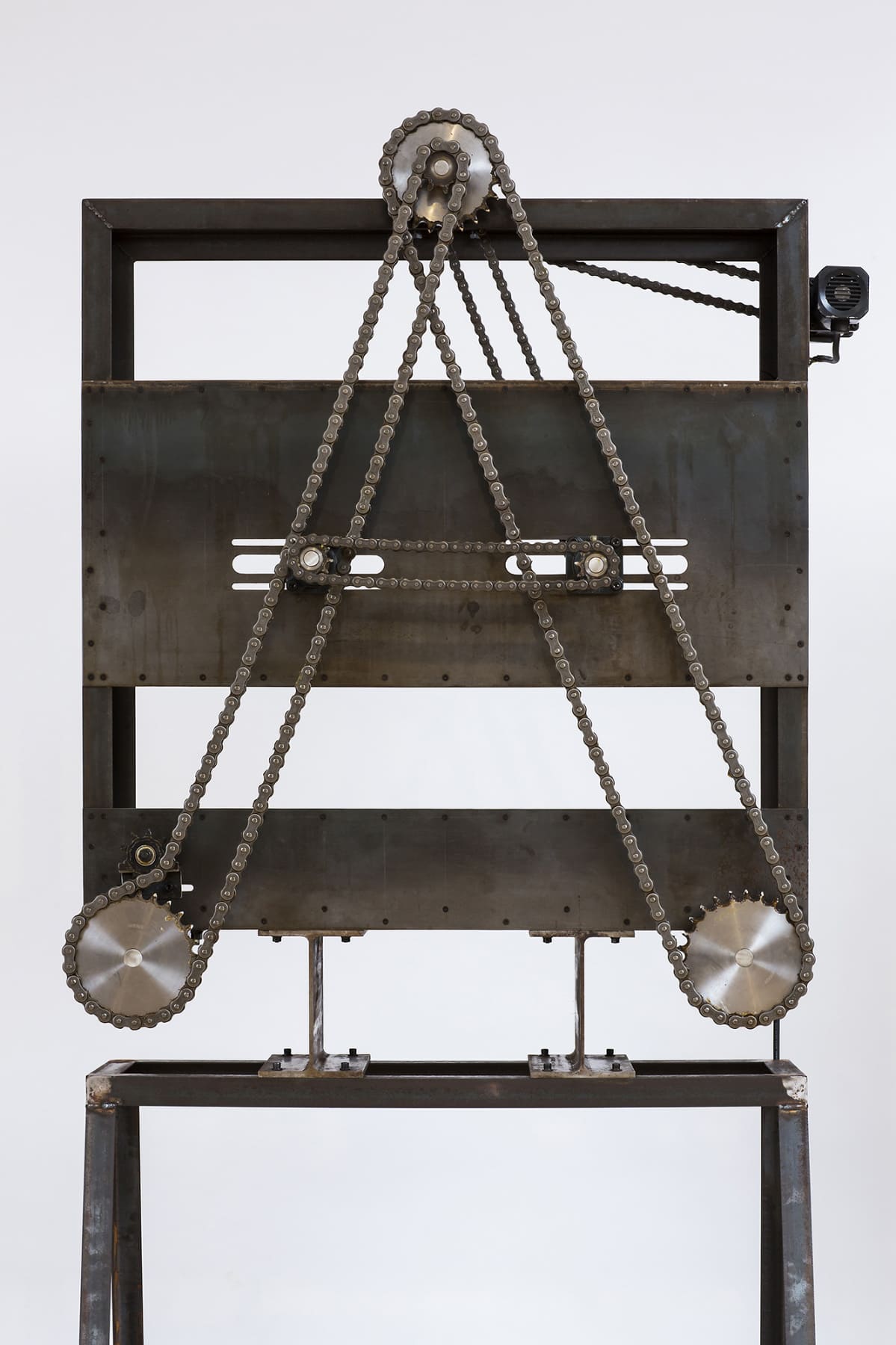
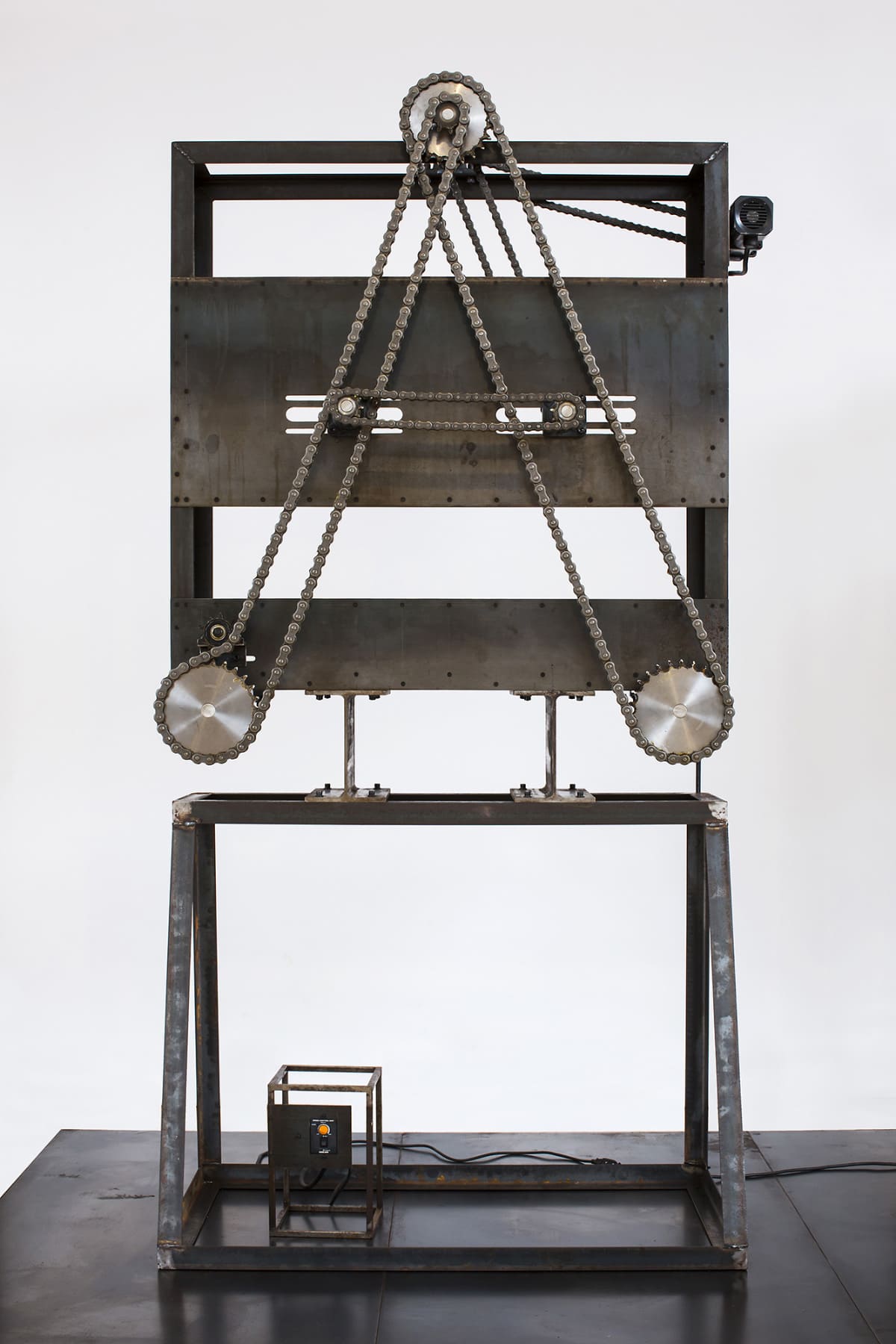
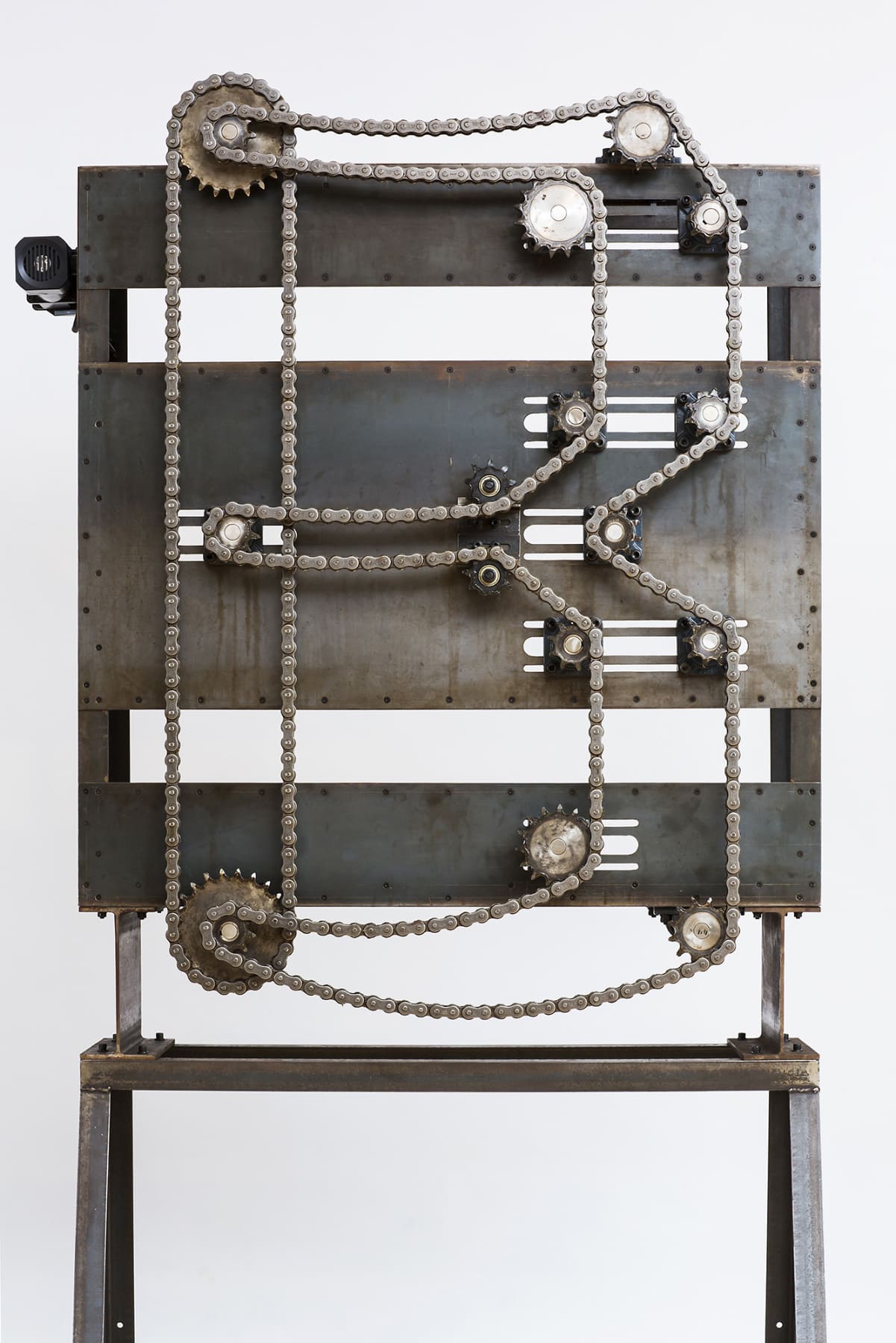
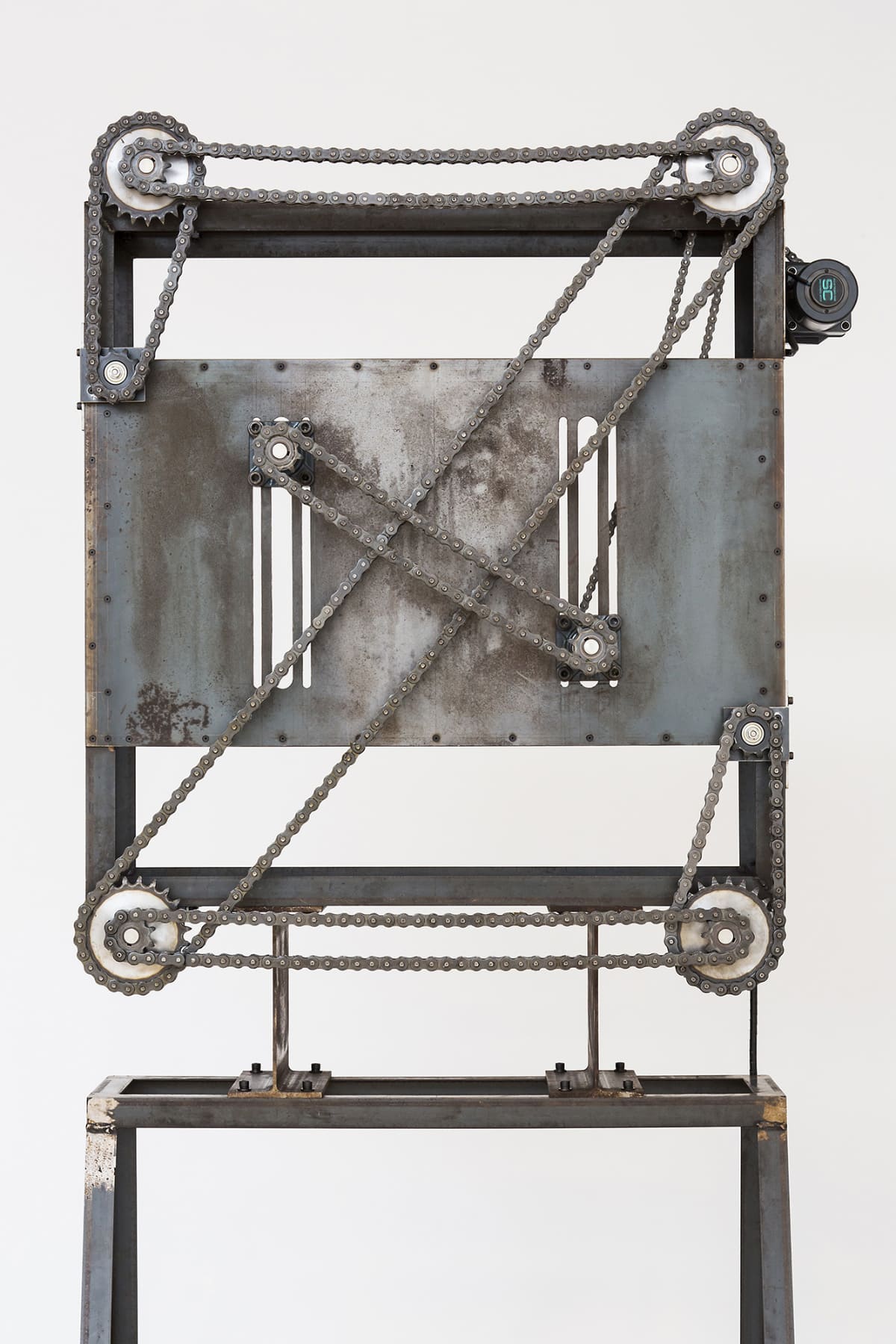

意味はない、無駄がない
回転、接触、点滅、移動など非常に単純な運動の組み合わせでタムラサトルの作品は形成される。プラザノースの5周年を飾る本展覧会では、これらの運動を組み合わせてつくられた3種類の作品が会場内に鎮座する。回転と接触により白熱灯を明滅させる《100の白熱灯のための100のスイッチ》、回転と移動により静かなうなりとともに文字のかたちを描く「マシーンシリーズ」、そして不規則に純粋に回転のみを繰り返す「回転する木の円盤」たち。どれもその形態や動き自体に意味はない。タムラのウェブサイトに記載されている彼のステイトメントには、「作品の中で、意味を積極的に破壊するか、もしくは意味がつかない状態にしてしまいます。素材・形態が持つであろう意味・設定・目的からも、自由でありたいのです。あるいは、それらに疑問を持っているのです。」という一文がある。
最近、「芸術における「術」とはいかなるものか」という命題について思索しているのだが、タムラの活動は実はこの「術」を非常にストイックに追求するものであると感じている。「芸術」ということばを辞書でひくと、「特殊な素材・手段・形式により、技巧を駆使して美を創造・表現しようとする人間活動、およびその作品。芸・技芸。わざ。」と記載されている。近年様々な形態の芸術作品といわれるものが世の中に満ち溢れているが、いまいちど「芸術」とよばれる所以を探求する地点へと立ち戻るための要素を、タムラの作品は孕んでいると考えられる。
「意味はないが無駄がない。」とは、タムラの作品をよく言い得た一言だと思う。彼の多くの作品が何らかの動きをもつが、その動きには全く意味がない。それと同時に、その動きを実現するための機構には全く無駄がない。《Aマシーン》を例として取り上げると、巨大な「A」という文字を描き、それを動かすために、チェーン、ギア、モーター、H型鋼、鉄板、鉄管、ボルトにナットなど様々なパーツが選択され、それらを統合してひとつの大きな機構が組上げられている。パーツ選びは非常に慎重になされ、ケーブルの色や太さ、ネジ山のかたちなどすべてが入念に検討されている。そしてサイズの異なるたくさんのギアやチェーンがすべて連動するかたちでひとつの文字が描かれ、静かに動く。全ての部位が必要で、どれひとつ欠けてもその無意味な動きは実現されない。そのためこれだけの物質を重ねても、そこに装飾は一切存在しない。その動きに意味はないが、その無意味な動きがあるからこそ、そこには小さな笑いや驚きが生まれる。意味なき動きを実現するために徹底した選択を重ねた結果、非常に完成度の高い機構が意義や目的を剥奪されたかたちで実現している。彼の作品は、高度に推敲されたもの選びの選択眼と、ひとつのオブジェクトとして統べる造形の高い技術に支えられている。
《100の白熱灯のための100のスイッチ》は、円を描くかたちで100本の細い金属棒が床上に立てられ、壁面には100個の白熱灯が取り付けられており、金属棒と白熱灯がひとつひとつ対応するかたちで配線されている。100本の金属棒の中心を軸として時計の針のように回転する太い金属棒が細い金属棒に触れると、各棒に対応する電球が点灯する。つまりその接触のあいだのみ電源スイッチがonになっているということだ。この作品においても、コンセント用プラグから、金属棒を立てるための仕組みに至るまで採用される部品や仕組みは徹底的に吟味されている。かなり大掛かりな機構であるが、ここで実践していることは「スイッチが入ると電球が点灯する」という、本当に単純で当たり前のことだ。私たちが日々無意識に繰り返している些事を、最大限遠回りして実現する自動機械なのだ。大真面目に、非常に美しいけれど全く意味を喪失した行為が淡々と継続される。
タムラはその作品の説明をとても簡潔にまとめる。彼の作品集から無作為に抜粋すると、例えば《白熱灯のための接点 #9》には「電極となっている鉄板と銅の棒が不安定に接触することにより、照明が明滅する」という解説を、《9Kg Elephant》には「既製品の鋳鉄像に穴を開け、9000gを維持する」という一言が添えられている。どの作品も見事に最小限の一文で解説ができてしまう。タムラは決してその意味は説明しないで、その作品が発する動きや現象のみを伝える。そのことばにもやはり一切の無駄がない。
必然性のある要素のみを慎重に選び抜き、出来得る限りの迂回をして実現される当たり前の現象。そこで起こっている現象や動きが当たり前であればあるほど、私たちはささやかな笑いを誘われ、そしてそこにアーティストの「意味はないが無駄がない」ものを生み出す高度な「術」を見出すのだ。この世界を生き抜くために私たちはいかなる「術」を身につける必要があるだろうか。タムラが実践する「芸術」には、そのかすかな道しるべがあると信じている。
服部 浩之(青森公立大学 国際芸術センター青森 学芸員)
There Is No Meaning, There Is No Waste.
Rotation. Contact. Flickering. Movement, etc. The work of Satoru Tamura is composed of a combination of very simple exercises. In this exhibition, which marks the fifth anniversary of Plaza North, three kinds of work utilizing a combination of these motions are exhibited in the hall.
The lamps of “100 Switches for 100 Incandescent Lamps” intermittently blink because of the rotating and contact, the “Machine” series, with a low growl, rotates and draws the shape of a character, and the “Spinning Wooden Disk” series of works irregularly and purely repeat their rotations. There is no meaning in these forms or movements.
The statement on Tamura’s own website states that “in my work, meaning is destroyed aggressively, or, the meaning will be in a state that does not stick. If the materials and forms possess meaning, setting or purpose, I want to be free of them. Or perhaps I doubt them.”
Recently, I have been thinking about the question “what is the ‘way’ of fine art?” Actually, it feels like the activities of Tamura very stoically pursue the “way”. When looked up in the dictionary, the word “art” is noted as; “human activities which try to create and express beauty, make full use of skill, are unique by materials, means and format, are works of art. Art. Technique. Skill.” Although in recent years the world is full of works of art of various forms, once more there is a return to the point to explore why it is called “art”. I feel Tamura’s work expresses this exploration.
I think the phrase “there is no meaning, but there is no waste” describes the work of Tamura very well.
Most of Tamura’s works have some kind of movement, with absolutely no meaning to the movement. On the other hand, in order to realize the movement the mechanism is completely not a waste.
Taking as an example the “A Machine”, which draws a giant “A”. In order for it to move, chains, gears, motors, H-beams, iron plates, iron pipes, a variety of parts, such as a nuts and bolts are selected, and integrated to assemble the big mechanism. The parts are very carefully chosen; the cable color and thickness, the form of the screws etc. All have been thoughtfully considered. By the work of many gears and chains of different sizes quietly moving, one character is drawn. All of the parts are needed. Its meaningless motions cannot be achieved if lacking even one part. Therefore even if the materials are all piled, there is absolutely no decoration.
Although there is no meaning to the movement, it is from this pointless movement that laughter and surprise is born. In order to realize these meaningless movements, a result of repeated, thorough selections, a very high degree of perfected mechanisms is realized in forms that have been stripped of meaning and purpose. His works are supported by his sophisticated observation of selection, and his “objects” also have a high level of technique.
“100 Switches for 100 Incandescent Lamps“consists of 100 thin metal rods moving in the form of a circular motion on the floor. On the wall, 100 incandescent lamps are mounted. The metal rods and the incandescent lamps are wired in a way that every single correspondence. The center of the 100 metal rods is like an axis, and, like the hands of a clock the thick metal rod rotates, touching the thin metal rods, and the corresponding light bulb is turned on. What we have here is a power switch, that is only switched on by contact. In this work, all the elements have been thoroughly chosen, from the electrical outlet plug, to the parts and the mechanisms to be adopted, to the arrangement of the metal rods. This is a fairly large-scale machine, but by the basic idea that “a light bulb is switched when a switch is touched”, is, as a matter of fact, really simple.
The trivialities that we are repeating every day unconsciously, this automatic machine expresses in the most roundabout way as possible. In all seriousness, although it is very beautiful, it has lost all meaning and the act is indifferently continued.
Tamura describes his work very briefly. From his collection of works, an excerpt at random reads, taking “Point of Contact for the Incandescent Lamp #9” for example, the description is; “by utilizing iron plate and copper rod, which is unstable when contact is made with the electrode, the light blinks”. In terms of “9kg Elephant”, the technique is to make holes in the ready-made object to maintain the 9000g weight”.
Any of the works can be described perfectly with a minimal sentence. Tamura never explains the meaning. His works convey only the motion and phenomena that are emitted from them. There is not even any waste in his words.
By careful choice of necessary elements, and in the most roundabout way as possible, these natural phenomenon can be realized.
The more ordinary these phenomenon and movements are, the more they make us chuckle, and from there, the artist finds his advanced “way” to produce, because, if “there is no meaning, there is no waste.”
In order to survive this world, I wonder if we must become knowledgeable about this “way”. Tamura’s practice of “art” is, I believe, a little guide.
HATTORI Hiroyuki (Curator, Aomori Contemporary Art Centre )
